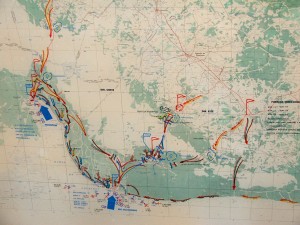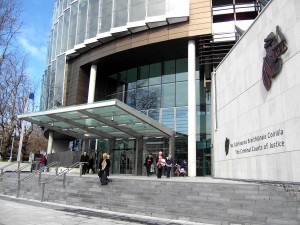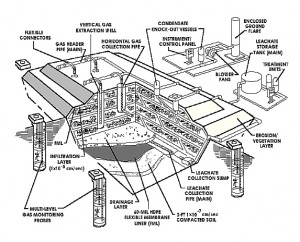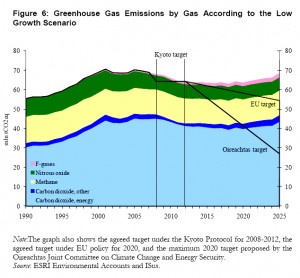2011-05-31: Further to my earlier Post, dated 22 December 2010 …
1. Social & Economic Environments in Ireland ?
It has been a hectic few weeks here in Ireland … with successful visits to our country by Queen Elizabeth II of England and President Barack O’Bama(!) of the United States of America … not at the same time, of course … and, lest we ever forget, the Leinster Rugby Team winning the Heineken Cup in Cardiff … and the Munster Rugby Team then beating Leinster, a week later, to win the Magner’s League Final in Limerick. It will take us a month of Sundays to recover !
It is slowly dawning on people in Ireland, however, that the Economic Environment is not the same as the Social Environment, which we are discovering is still resilient, robust, warm, vital and healthy. As for our miserable Economic Environment … sin scéal eile (that’s another story) … please see #2 below.
Social Environment: The complex network of real and virtual human interaction – at a communal or larger group level – which operates for reasons of tradition, culture, business, pleasure, information exchange, institutional organization, legal procedure, governance, human betterment, social progress and spiritual enlightenment, etc.
The Social Environment shapes, binds together, and directs the future development of the Built and Virtual Environments.
Built Environment: Anywhere there is, or has been, a man-made or wrought (worked) intervention by humans in the Natural Environment, e.g. cities, towns, villages, rural settlements, service utilities, transport systems, roads, bridges, tunnels, and cultivated lands, lakes, rivers, coasts, seas, etc … including the Virtual Environment.
Economic Environment: The intricate web of real and virtual human commercial activity – operating at micro and macro-economic levels – which facilitates, supports, but sometimes hampers or disrupts, human interaction in the Social Environment.
These are important distinctions !
.
2. Ireland’s National Economic Governance ?
In Ireland, a big deal has been made of losing our National Economic Sovereignty.
BUT … on 19 April 2011 … the Report of the Commission of Investigation into the Banking Sector in Ireland was published … ‘Misjudging Risk: Causes of the Systemic Banking Crisis in Ireland’. This document was prepared by Mr. Peter Nyberg, a Finnish Economist … and sole member of the Commission.
Immediately, it should be pointed out that this is just one report … in a series of reports purporting to thoroughly examine separate aspects of the Economic Catastrophe which befell Ireland in the period leading up to and during 2008. The intention of the Irish Government, at the time that these Investigations were established, was to obscure … as much as possible … the Big Picture of a Completely Corrupt & Dysfunctional System of Irish Economic Governance. Nobody saw anything … nobody heard anything … nobody knew anything !!
In order to protect the Guilty, the Incompetent, and the Inept … individuals are typically not named in such Investigation Reports. We – the Citizens of Ireland – are therefore not in a position to clearly identify these ‘mothers’ … as they engage in an elitist game of musical chairs around the boardrooms and senior management levels of our national institutions.
The following extract from the 2011 Nyberg Report … will give you a small, and very mild, flavour of what was happening during the Celtic Tiger Years. Please forgive the length of the extract … but try to stick with it. You must understand.
2011 Nyberg Report
‘Misjudging Risk: Causes of the Systemic Banking Crisis in Ireland’
Chapter 5 – Findings & Final Considerations
5.1 Findings – General
5.1.1 The Report concentrates, as its Terms of Reference require, on explaining the reasons specifically for the Irish banking crisis. However, it is useful to keep in mind that this crisis cannot be seen in isolation from what was happening elsewhere. It appears, at least on the face of it, that many of the problems and failings in Irish banks and public institutions were quite similar to those in other countries.
5.1.2 For instance, Irish banks compared their policies and achievements with peer groups containing well regarded banks in the UK and the EU. Risk management systems and remuneration practices were often adopted from abroad. Judging from results, similar problems, as in Ireland, arose in implementing them in a manner consistent with prudent credit policies. The relatively greater losses seen in Ireland may thus be seen as a consequence of somewhat greater abandon in accessing wholesale funding and in lending to domestic property than in other countries. Thus, there is a difference in degree rather than in concept.
5.1.3 Similarly, central banks and regulators abroad generally were almost as unsuspecting of growing financial fragility as their Irish counterparts. The method of regulation or the number of available macro-economists does not generally seem to have made a great deal of difference. The same seems true of auditors, rating agencies, analysts and investors, most of whom remained calm and optimistic until the crisis actually broke. Internal investigations in the IMF also indicate a widespread lack of understanding and clear communication of the accumulating risks by that organisation. There were incentives to conform with prevailing views, even in cases where proper analysis would have identified growing risk.
5.1.4 The fact that Ireland was not special does not, of course, account for or diminish the failures in the performance of the people in private and public positions responsible for financial stability and prudent banking. It does, however, put the many undoubted failings found by the Commission into perspective. Regardless, it indicates that the problems experienced in Ireland in the 2000’s have a wider relevance, as do any suggestions on how to prevent similar things from easily happening again.
5.2 Findings – Banks
Business Models & Strategies
5.2.1 Responding to increased competition and pressure for increased earnings, banks set aggressive targets for profit growth. In many cases, this drive for growth really implied a partial change in business model and strategy without the corresponding necessary strengthening of governance, procedures and practices. This was accepted partly because future economic developments were trusted to remain benign in Ireland as they already had been for several years. Comfort was also taken from peer bank practices and the lack of concern among authorities, market participants and observers. The particular characteristics of the property and funding markets were not taken into account.
5.2.2 In practice, Anglo Irish Bank (Anglo) was a monoline bank providing rapid but not cheap financing to a number of long-standing customers mainly in the commercial property market; sales and customer retention were important drivers of activity. Irish Nationwide Building Society’s (INBS) business model was unique and different to those of any of the other covered banks as it was concentrated primarily on speculative site finance, which proved initially to be very profitable in a rising property market. The model was risky, however, and risk mitigation primarily involved selecting trusted and previously successful customers. The business models of the other covered banks were more diversified, but during the Period most of them escalated their financing of commercial property in order to achieve profit growth. While IL&P remained concentrated on mortgage lending, it was increasingly funded by the wholesale markets.
Governance & Procedures
5.2.3 The primary problem with governance in the majority of the covered banks was not that it was lacking or poorly structured but that, over time, it changed as controls gradually weakened to allow increased growth. In some cases, management information systems were weak and did not give managers and the board meaningful or complete information. In particular, inadequate consolidation and categorisation of lending sometimes resulted in an incomplete picture of total or type of property exposures. In some of the bigger banks, the embedded internal divisional structures made group oversight difficult. The INBS model was atypical; the Society lacked a number of formal functions usually considered necessary in banks and, in addition, documentation was substandard.
5.2.4 On boards, there appears to often have existed a collegiate and consensual style with little serious challenge or debate. Among Non-Executive Directors (NED), it appears that the banking knowledge and expertise necessary to assess the lending and funding risks inherent in bank business models was insufficient. They were therefore formally independent but, in practice, highly reliant on the knowledge, openness and ability of bank management. In particular many NEDs, but also a number of senior management, seem to have believed that the existence of formal policies, structures and procedures were, on their own, sufficient for the prudent management of the business. As they came to rely more on sophisticated models, partly in consequence of the introduction of Basle II, many of the basics were neglected. It appears that senior management and boards did not appreciate how general growth targets affected operations lower down in the organisation.
5.2.5 In Anglo, some board members had significant shareholdings in the bank which indicates that they had particularly full trust in the operations and growth goals of the bank.
Remuneration
5.2.6 Financial incentives, while not the major cause of the crisis, likely contributed to the rapid expansion of bank lending since the incentives did not sufficiently stress modifiers for risk. There are, however, also other important motivating factors which must be taken into account when assessing the behaviour of individuals.
Lending & Credit
5.2.7 Lending growth was substantial in all covered banks and was largely concentrated in the property sector. In order to facilitate growth and make banks more competitive, credit and lending policies gradually became more relaxed and were frequently ignored or bypassed with exceptions to policy becoming commonplace. Furthermore, sector limits and individual exposure limits, where they existed, were regularly exceeded.
5.2.8 Real estate valuations in a rising property market created a ‘confirmation bias’ and frequently went unchallenged in the credit functions. The practice of equity release reduced the collateral buffers held by the banks and increased their risks accordingly.
Funding, Liquidity & Capital
5.2.9 On joining the EuroZone, Irish banks gained increased access to wholesale funding at a relatively low cost. As retail and corporate deposits were not sufficient to fund lending growth, wholesale funding enabled the banks to respond to competition and to grow balance sheets and earnings at a pace that banks believed would protect their independence and market share.
5.2.10 Treasury operations, charged with the balanced and prudent funding of asset growth, were also profit centres. This involved an inherent conflict as the use of cheaper short term funding frequently increased Treasury’s profitability at the expense of longer term funding stability.
5.2.11 There were significant increases in the loan-to-deposit ratios and in wholesale funding-to-total funding ratios. Furthermore, risks associated with wholesale funding were not fully recognised or understood in many cases. Banks consistently assumed that the uninterrupted and unlimited access to wholesale funding, at a low or reasonable cost, would remain. They also believed that the option of securitising eligible portions of their portfolio would always be possible.
Risk Management
5.2.12 Risk management structures proved largely ineffective in prudently managing and controlling rapid growth. As effective structures would have made high volume targets difficult to achieve, banks allowed their effectiveness to erode over time. There was also insufficient understanding or acknowledgement of the risks associated with the adopted business strategies or the sector concentrations. With easy access to funding, there was little effort by or incentive for the banks to diversify their property risks through measures such as syndications or loan selldown. Furthermore, there was a general belief among bankers and others in political, media and academic circles (including some very influential commentators) that there would be, at worst, a soft landing.
Regulation as Seen by Banks
5.2.13 Banks, clearly somewhat in agreement with the Financial Regulator (FR) itself, believed that they were in a better position than the FR to judge and decide upon what was most prudent in their own operations. This belief was underpinned by the fact that regulation was ‘light touch’ and seemed to stress consumer issues rather than prudential issues. There was almost an element of the FR being ‘fobbed off’ by banks that had particularly full confidence in the quality and sophistication of their models and systems. Subject to this, the FR and its communications were normally, however, accorded proper formal respect.
5.2.14 There were numerous instances of non-compliance with respect to banking regulations and guidelines which went unsanctioned by the FR. In some cases (Anglo and INBS), where the FR did raise concerns, they sometimes led to little real change and there was little follow through by the FR. Bank management drew undeserved comfort from the acquiescence of the FR in relation to this non-compliance.
5.2.15 There existed a loop of excessive reliance between the various authorities on the one hand and between accounting standards, internal risk structures, credit grading systems and board sub-committees on the other. This systemic failure resulted in the dangers inherent in the business models remaining undetected until it was much too late.
5.3 Findings – Authorities
5.3.1 The speed and severity of the crisis was exacerbated by worldwide economic events. The main reason, however, was the unhindered expansion of the property bubble financed by the banks using wholesale market funding. Government policies and pronouncements tended to support this expansion. The attendant risks went undetected or were at least seriously misjudged by the authorities whose actions and warnings were modest and insufficient.
5.3.2 The Irish authorities had the data required to arouse suspicion about trends in the property and financial markets. The relaxed attitude of the authorities was therefore the result of either a failure to understand the data or not being able to evaluate and analyse the implications correctly. Both macro-economic and banking data could, particularly when combined, have provided the authorities with an understanding of what was going on. The Financial Stability Reports (FSR) provided information on individual perceived risks but, in the Commission’s view, the data should have raised greater suspicions by end-2005 or, at the latest, by 2006.
The Financial Regulator
5.3.3 Provided the appropriate structures and processes were in place, the FR’s approach was to trust bank leadership to make proper and prudent decisions. However, even when problems were identified and remarked upon, the FR did not subsequently ensure that sufficient corrective action was taken. Thus, even insightful and critical investigation reports tended to have little impact on banking practices. Furthermore, readily available information on, for instance, sector or borrower concentrations was not sufficiently critically analysed by the FR. Even if it were accepted that the FR was significantly under-resourced throughout the Period, this would not explain why available information was not acted upon.
5.3.4 It seems remarkable that the FR in practice accepted the severe governance problems in INBS. Allowing this bank to continue operations without major reforms or sanctions must, on the part of the FR, have reflected either a reluctance to pursue legal action or a profound trust in bank management and the board. Similarly, the rapid and concentrated lending growth in Anglo, and later in other banks, did not lead to regulatory action, with reliance being placed on management assurances that all was basically well. The FR continued to accept these assurances, even after the Guarantee decision in late 2008.
5.3.5 The Commission is aware of the view that the FR did not have sufficient powers to intervene. This view is not persuasive given that the FR could have acted in concert with the Central Bank (CB) and, ideally though perhaps unrealistically, with Government support. The real problem was not lack of powers but lack of scepticism and the appetite to prosecute challenges.
The Central Bank
5.3.6 The CB chose to rely on the FR appropriately handling individual bank stability issues, much as the FR in turn chose to trust bank leadership. By implication, unless there were problems in the individual banks, there could not be major stability issues in the system as a whole. The Financial Stability Report (FSR) was constrained to present benign conclusions with a number of almost routine warnings voiced in the text itself. Simultaneously, macro-economic data signalling the emergence of the two key risks – growing dependence on foreign funding and the concentration of bank lending in the property sector – did not appear to have caused acute concern.
5.3.7 At least at policy level, the CB seems not to have sufficiently appreciated the possibility that, while each bank was following a strategy that made sense, in the aggregate, when followed by all banks, this strategy could have serious consequences for overall financial stability. This was a classic macro-economic fallacy that must have been recognised in the CB and it remains unclear why it was not appreciated at senior levels there. However, there are signs that a hierarchical culture, with elements of self-censorship at various levels, developed in the CB. Of course, this eventually made it even harder to address the increasing instabilities in the financial market.
5.3.8 The Commission is aware of but disagrees with the view that the CB would not have been entitled to intervene to address stability issues concerning individual banks. If the CB management had identified or given sufficient weight to macro-economic vulnerabilities, it could and should have initiated discussions with the FR to ensure a deeper analysis of individual banks’ regulatory returns. However, as neither institution suspected any significant problems this does not appear to have been done.
The Department of Finance
5.3.9 The Department of Finance (DoF) did not, despite its mandate, see itself as concretely involved in financial stability issues; it also did not have the requisite professional staff for this. There were regular formal contacts with the FR (via the approval process for its budget) and somewhat more frequently with the CB, both in practice responsible for operational stability assessments. The DoF saw itself as preparing legislation to be implemented by the other authorities, but appears to have avoided addressing other financial market issues unless brought to the table by the FR or the CB (for instance, Credit Union issues during the Period). This apparently was due to their legally independent status. The Commission could find no evidence that the DoF formally tried to influence the FR in its work. The DoF also did not make any efforts to strengthen its own financial market expertise despite crisis management exercises in the EU having shown a need for it among finance ministries.
5.3.10 Had the DoF taken a greater interest in financial market issues early on, preparations for dealing with the financial crisis would have been more comprehensive. It is well documented that the DoF consistently, though not forcefully enough, supported a less expansive fiscal policy, particularly regarding property market incentives. It also appears that worries about the developing financial situation were expressed internally from time to time by some DoF staff. However, nothing came of this as the CB and FR were seen as responsible for financial stability.
The Guarantee Decision
5.3.11 From mid-2007 onwards, co-operation improved between the key institutions involved and some important preparatory crisis management work was undertaken. However, the view that the only relevant problem was a threat to the liquidity position of the banks remained unchallenged throughout. There appears to have been no fears and, at most, a modest discussion on possible underlying acute solvency problems. This is true of the banks themselves, as well as of the authorities.
5.3.12 The discussions for alternative measures before and on September 29, 2008, were conducted on the basis of very deficient information. The authorities were apparently convinced that bank solvency issues were not pressing or significant, as were the banks themselves, and that it therefore would be possible to resolve the acute liquidity issue. Furthermore, the liquidity problems appear to have been seen as temporary only and related mainly to international developments. If more relevant information on and analysis of the underlying position of some of the banks had been available, discussions and policy recommendations may have been very different.
5.3.13 Given the information provided, the Commission understands the Government’s decision to provide a broad guarantee for the banks; if no major solvency problems were expected the Guarantee would not have to be called upon. However, given the size of the amounts involved as well as the domestic and global uncertainties, it could have been useful to access available temporary funding to gain time to examine more thoroughly the advantages and disadvantages of alternative approaches. These could have included limiting the scope and duration of the Guarantee. However, there were concerns that the market would not have acted positively to such a delay at the time.
5.3.14 The lack of information on bank exposures among the Authorities over time had profound implications for the decision actually taken. Had better information on exposures and thus the risk of future impairments already been readily available in earlier years, government advisors could have suggested, even much before September 2008, that such banks with reasonably foreseeable problems should be taken into public administration immediately and gradually closed or restructured. Management could have been changed to eliminate further lending and risk-taking. Banks could, alternatively, have been required to raise additional capital from the markets while it could be accessed; markets still were open for this. However, authorities continued to believe that banks did not have excessive property exposure and even outside evaluators only gradually came to a different view. As it turned out, no bank restructuring was contemplated until several months after the Guarantee when plans announced by the Government on a piecemeal basis had proved to be insufficient, thus reducing the credibility of the Irish authorities.
5.3.15 Crisis management in Ireland, therefore, was rendered less than fully effective by long-standing insufficient appreciation of bank exposures on the part of all the authorities. Decision makers and their various advisors, in autumn 2008, still mainly shared the common view that the banks were, and would remain, solvent.
5.4 Why Did It All Come Together ?
5.4.1 It has been argued in this Report that during the Period the paradigm of efficient financial markets was widely accepted, particularly among developed nations. Believers in a naïve version of this paradigm would tend to assume that developments in the financial markets, almost by definition, could not be seriously flawed from a systemic point of view. Furthermore, they would also tend to assume that regulation of the financial markets would reduce innovation and efficiency without improving stability; less and lighter regulation was therefore better. Since there was widespread international belief in this paradigm, the international nature of the financial crisis, as well as the general unpreparedness of banks and authorities, is easier to understand.
5.4.2 To the extent that this paradigm, in its naïve version, had become widely trusted among Irish financial professionals in private and public institutions, such an assumption may have been made both across institutions and within institutions (strengthened through groupthink). These assumptions in turn would have led, in the absence of strong and specific proof, to a belief that virtually any market feature or development was benign almost by definition, whether in the property market, the financial market or, indeed, in any individual bank. In effect, if it was financed by somebody, it must almost by definition be sound.
5.4.3 However, it is the belief of the Commission that stronger, irrational forces were also present. The widespread consensus as well as the confidence, until the very last moment in late 2008, that everything would end relatively well points to the existence of a national speculative mania in Ireland during the Period, centred on the sale and acquisition of property. Warning signs were ignored as continuing economic stability was confidently assumed. Traditional values and practices were seen as less relevant in the new financial order. When the mania ended, participants had difficulty in accepting blame for their own part in it since everything had seemed so normal and acceptable at the time.
5.4.4 Given this background, it is easier to understand why developing and clearly visible problems in the Irish banks and markets could remain ignored by so many. It also helps explain why banks so readily crowded into speculative property lending, which appeared to be a certain road to success (herding on the mania). It makes it easier also to understand why the authorities, despite being provided with information on increasing fragilities in the banking system, could remain complacent for so long. Finally, it goes some way towards explaining why the crisis, despite being the culmination of a number of clearly unsustainable developments, was so totally and generally unexpected almost up to the very last minute.
5.4.5 The general acceptance of the paradigm of efficient markets also throws light on why most international institutions, foreign analysts, rating agencies, lenders, authorities and commentators were as relaxed about Irish developments as people in Ireland themselves. It is argued that the long period of benign conditions in Ireland played a substantial role in convincing observers that developments were stable. Furthermore, if large numbers of people also believed in the naïve interpretation of the efficient financial markets paradigm, very few developments in the financial markets would appear unsound or imprudent to them anymore.
5.4.6 It may seem remarkable that people in Ireland (and elsewhere) with extensive experience in regulating and operating in financial markets may have accepted such fairly extreme assumptions for their daily work. It has been argued that various bandwagon effects (see Section 1.6 above) may have played an important role in this, as may the fact that international supervisory and banking peers abroad also accepted these assumptions at least to some degree.
5.4.7 Ireland’s systemic banking crisis would have been impossible without a widespread suspension of prudence and care by those responsible for bank management as well as by those charged with ensuring responsible financial conduct. Investors and other borrowers as well as bank executive management have an interest in doing deals with each other for profit and for glory; what went missing was prudence in ensuring that such deals were soundly based. Bank boards and public authorities, whose role it is to make it difficult for the dealmakers to go overboard, continued with their traditional work. However, their authority and, unfortunately, their vigilance as watchdogs were in decline. The stability of markets was becoming more dependent on bank management and their risk management systems.
5.4.8 The majority of bank executive management, despite their apparent superior technical knowledge of the business, chose to follow the new but unsustainable banking model. Lending was seen (and rewarded) as selling a loan or service rather than as acquiring a risky asset. Banks’ management and boards embraced a lending sales culture at the expense of prudence and risk management. This view then spread down through the ranks, partly through the effects of volume targets and bonus systems and partly through indoctrination, causing the massive run-up in risky assets.
5.4.9 The external watchdogs generally remained inactive as management’s new banking model was introduced and implemented. There was no strong external reaction when management prudence eroded within the Irish banking system, as evidenced by the very rapid growth in lending and wholesale funding. The Commission has not found any clear and documented cause for the simultaneous lack of action by various watchdog authorities; it can therefore offer only the partly hypothetical behavioural factors described earlier in this section.
5.5 Specific Irish Features
5.5.1 The Commission proposes that the crisis points towards some interesting features of how Irish society appears to have functioned during the period 2003 – 2009. It is considered that these features may be specific only to Ireland and, if present, they would further help explain why there was little recognition and even less prevention of the property mania in Ireland.
5.5.2 Firstly, there seems to have been little suspicion or doubt among Irish decision makers that the path being followed was the correct one. A great number of persons in very responsible management and watchdog positions insisted that, until the end, they had no idea that a serious and acute problem with lending and funding exposures in the banking system even existed. In the stated absence of this knowledge, little was done to prevent the crisis. This is true of politicians (whether in government or opposition), central bankers, regulators, department officials and bank board members as well as influential analysts in the media, academia and financial enterprises.
5.5.3 The Commission has been widely assured by bank management, non-executive board members and others that the problems in banks’ loan books came as a complete surprise. There is regret, incredulity and guilt among them at the lending and funding policies pursued and the lack, at the time, of any recognition of what was happening. The credibility of their assertions is increased by the fact that a number of them personally suffered substantial losses in the crisis, easily avoidable if advance warnings had been available and recognised.
5.5.4 This suggests to the Commission that, in the absence of a liquidity crisis at this time, things would have continued much as before in Ireland, at least for a time. The property market would have continued to expand, though at a slowing pace, and banks’ portfolios of property loans would have continued to grow. Therefore, banks would have had time to become even more dependent on market funding and even more exposed to the effect of any doubt regarding the value of their assets. At some point, financial markets would have realised the risks on the Irish banks’ balance sheets. While a soft landing always would have remained a possibility in principle, overall international experience with the bursting of property bubbles, the general lack of foresight as well as the scale of the exposures seems to argue against it.
5.5.5 Secondly, there was a conspicuous lack of timely critical debate and analysis by bank analysts within institutions and among the public at large. The complacent views of Government, other authorities, banks and their customers appear to have been very well aligned with each other. Public policy and discourse seems to have almost unanimously accepted and encouraged views and practices that later proved disastrous. Examples are not difficult to find; for instance, the pervasive assumption of continued growth, the failure to see growing indebtedness as a serious policy problem, the ‘soft landing’ scenario and, finally, an unwillingness to recognise the existence of long-standing problems in some banks. When alarms were finally sounded, they were too late for meaningful action; the problem loans were already on the banks’ books and were largely illiquid.
5.5.6 The very limited number of warning voices was largely ignored. Attempts by banking insiders during the Period to send cautionary signals to market participants about escalating property values were dismissed as ill informed and wrong. Doubters (the few that identified themselves as such to the Commission) in the main grew unsure over the years when nothing seemed to go wrong. It also appears that some stayed silent in part to avoid possible sanctions. The Commission suspects, on the basis of discussions held with a wide number of people, that there may have been a strong belief in Ireland that contrarians, non-team players, fractious observers and whistleblowers would be informally (though sometimes even publicly) sanctioned or ignored, regardless of the quality of their analysis or their place in organizations.
5.5.7 Thirdly, many institutions in the broader financial sector seem to have operated in silos. There appears to have been little appetite or opportunity for looking at ‘the bigger picture’ since, as related earlier, each part of that picture was ‘owned’ by different authorities or, within the banks, by specific departments. While clear divisions of responsibility are important, in Ireland such divisions appear to have reduced also the desire or (legalistically argued) the ability to co-operate effectively.
5.5.8 For organisational silos to work well there must either be strong and frank communication between their leaders or, alternatively, little interdependence between them. It is unclear which one of these, if any, was believed to operate. One possible consequence of this ‘silo think’ was that the DoF, discouraged from interfering in the work of the independent FR and CB, remained seriously underweight in professional financial expertise and engagement. The Commission considers it likely that the lack of overall analysis and responsibility in so many Irish public institutions may have allowed a number of warning signs to remain undetected. Indeed, overlapping interest is not necessarily a bad thing as long as responsibilities remain clearly differentiated.
5.5.9 Fourthly, adhering to either formal or traditional, often voluntary, constraints and limits on banking and finance, does not seem to have been greatly valued in Ireland during the Period. The wide acceptance of the new financial paradigm may have amplified any such tendency as it applies to the banking sector. The consequences for financial stability are, in any case, severe in the longer term.
5.5.10 Regulations, rules, procedures, constraints and sanctions exist primarily to prevent management and staff from going overboard during good times. The better and longer the good times are, the more important it is that these safeguards exist and are adhered to. If they do not exist, or are ignored, exposures can grow dramatically as confidence grows and risk is underestimated. The risk of systemic disturbances therefore increases greatly if political leaders and public institutions do not insist on these safeguards being consistently and efficiently followed. Therefore, any greater than average lack of willingness in Ireland to follow rules and constraints is likely to make for a more fragile financial system than elsewhere in the long run.
5.5.11 The Commission considers that it cannot have remained a secret from banking and audit professionals that time-honoured prudential limits and procedures were gradually falling into disuse, particularly in some banks. Examples and indications of serious governance and prudential problems were clearly available to professional observers, including the FR. Increases in credit concentration, loan size and volumes, as well as changes in funding structures, were not concealed. They could also have been inferred from macro-economic data. Information about ongoing and accelerating property speculation was common in everyday Irish life.
5.5.12 The Commission accepts that the new, widespread paradigm, as well as the mania in the Irish property market, could create strong pressures for conformity in all the institutions discussed in this Report. However, while this could explain such behaviour, it does not provide an excuse for those who conformed. Only a naïve and opportunistic interpretation of the paradigm, together with a lack of either relevant experience, training or historical knowledge, could possibly have argued for a major dismantling of the traditional prudential safeguards. History is replete with examples of what happens when bankers, authorities and others come to believe that ‘this time it’s different’.
5.5.13 The Commission therefore has reluctantly come to the conclusion that at least some of the financial market professionals at the time must have entertained private, undisclosed doubts on the sustainability of banks’ lending and funding policies. However, for various reasons ‘the dance had to go on’. Similarly, it seems likely that the public and private watchdogs remained less active than required, not only because they did not know, but also because it was not publicly acceptable, legally necessary or prudent to act at the time.
5.5.14 During much of the Period, Ireland was still seen as a success story that provided a large number of its inhabitants with self-esteem as well as rising incomes, wealth and welfare. Anybody seriously interfering with this process would expect to be publicly castigated as causing the very distress, loss and crisis that they would have been trying to prevent. Instead, by allowing the party and deal making to continue, management, investors and public and private watchdogs participated in its positive but temporary gifts.
5.5.15 That said, the Commission is not suggesting that financial professionals in Ireland consciously decided to let banks get into trouble. As indicated earlier, it is much more likely that professional suspicions were explained away or suppressed, in light of the new financial dogma and a long period of good times, in order not to appear fractious, unprofessional or alarmist among colleagues, superiors and others who were believed to possess equal or even superior knowledge.
5.6 Lessons to be Learned from the Irish Experience
5.6.1 As already noted above (Section 1.4), emergence of a systemic banking crisis requires that a number of important safeguards all become ineffective simultaneously. The likelihood of this is not large, since some part of society and the banking sector is likely to remain vigilant even if other parts do not. However, as has been seen in a number of countries and regions before, at times the unlikely occurs.
5.6.2 The Commission has, having extensively examined the most relevant available documentation as well as interviewed very many people involved in the run-up to the crisis, explained the crisis essentially as a consequence of applying a naïve version of the efficient market paradigm, supported by groupthink and herding. This helped create and strengthen a mania in the Irish property market. Professionals and non-professionals alike became convinced, and convinced each other, that financial markets were stable by themselves, despite historical evidence to the contrary. The implications of this conviction seemed to be in the immediate interest of the overwhelming part of Irish society. The resulting activity was something that, later on, seemed quite unsustainable, puzzling and contrary to prudential requirements and common sense.
5.6.3 The development of excess indebtedness and property market overheating appears to have been fairly common in many countries in recent years and decades. This Report contains a short indication of how a groupthink and herding mechanism could support a theory of recurring financial cycles. The Commission has detected signs of such a mechanism both within Irish banks and within Irish public authorities during the run-up to the crisis. This mechanism may have been particularly strong because of the widespread existence of a belief in self-regulating, efficient markets.
5.6.4 If this hypothesis is accepted, an important implication emerges. Because the real reason for the crisis is the spread of an ultimately irrational point of view, regulations and watchdog institutions cannot be counted on to be efficient preventers of a systemic crisis. As has been seen in Ireland and other countries, central bankers and regulators embraced much the same paradigm as the market participants and adapted their policies to their convictions. The result, as shown by the crisis itself, was that no effective brake on risk-taking existed for years. It does not appear wholly unfair to propose that this is what may happen also in the future if and when another new financial or banking paradigm appears. Many of the very reforms that recently have been undertaken, at short notice, to shore up the functioning of the present financial system could turn out, once again, to be ineffective.
5.6.5 Permanently improving financial stability therefore should perhaps, instead, be done in ways that do not necessarily demand the unfailing attention, prescience or vigilance of ministries, central banks or regulators. Arguably, the most important goal of such a system should be to directly reduce the likelihood of serious disturbances to the real economy. A number of suggestions have been made to primarily address this problem. They seem to have been made mostly by policy makers and practitioners; academic economists have often remained unconvinced by at least the more radical of these suggestions.
5.6.6 The prevalence of problem banks that are large in relation to both the economy and the sovereign (too big to fail and too big to save) suggests that measures limiting the size and growth of banks and the banking system in relation to the economy could be useful. One alternative, not widely supported due to its arbitrary nature, would be to directly set a limit on the absolute size of a bank’s balance sheet. Other alternatives, briefly discussed below, are indirect and would operate by raising the cost of expanding the (properly risk-weighted) balance sheet. Such alternatives include: a high and progressive minimum capital requirement (set nationally); limiting implicit government subsidies to certain bank activity clusters only; and raising the potential default costs for investors in banks. These alternatives can, of course, be combined.
5.6.7 Radically increasing the capital requirements of banks would reduce their vulnerability to both funding and solvency shocks. Since banks would need much more capital to operate, the resulting buffer of private capital would be larger in case of a default. Capital requirements could also be made progressive in relation to the size of the balance sheet. Since different countries would be able to support different-sized banks, such reform would have to be nationally determined. Competitiveness would be affected, creating pressure for an internationally agreed formula. As indicated by the discussions around Basel III, the issues of definition and of interaction with other prudential constraints are always significant. Problems of acceptance are likely to arise particularly in large countries able to support large (potentially problem) banks.
5.6.8 Banks are routinely provided with a number of indirect government subsidies. These include, inter alia: entry-limiting licensing requirements; monopoly on gathering retail deposits; access to central bank facilities; and the possibility of government assistance. Because such subsidies are designed to make the system more stable it would not be useful to eliminate them. What may prove feasible, however, is to delimit types of allowed funding and lending activities in a way that makes government assistance dependent on the type of banking license provided. This would limit the part of the banking system explicitly supported by the sovereign and increase ex ante the responsibility of private investors for the rest of the system. Such a separation would need some way of, additionally, severely limiting both ownership and funding links between different types of license holders. Competition issues would create pressure for international agreement on how various activities are defined and which may or may not be publicly assisted. Similar, though not identical, effects could be achieved through sufficiently divergent capital requirements for various asset classes. Nevertheless, if license groups are appropriately defined, much of the functionality of the present system could remain.
5.6.9 Accepting special restructuring regimes for financial enterprises would make it possible to address bad loans before the enterprise is insolvent. Introducing mandatory, collective action clauses for bank and sovereign bonds would reduce the supply of unsustainably cheap bank funding, as well as weaken any implicit demand on and credibility of sovereigns to protect bondholders. Both these features may be introduced more generally already as a result of the present crisis.
5.6.10 The costs to the economy of such reforms are undeniable; higher cost of credit (though mitigated by lower risk premia) and concentration of the banking business of large international enterprises to a smaller number of major international banks being the two most obvious. However, given the losses suffered through systemic banking crises over recent decades, this might be an acceptable price to pay for less systemic fragility and attendant resource misallocations. There is no free lunch and increased financial stability will always have costs. In the end, of course, the extent to which the present crisis causes a rethink on the basic model for maintaining a stable financial system will remain a very political decision with a major impact on important and influential financial institutions.
.
.
POSTSCRIPT
2011-10-16: Two days ago, on 14 October 2011, in Dublin … the Organization for Economic Co-Operation and Development (OECD) presented its latest Economic Survey of Ireland.
Becoming a Mature Independent National State, within a still developing system of shared sovereignty, balanced across all aspects of European Society … the European Union (EU) … must, sometimes, be a painful experience …
Organization for Economic Co-Operation and Development
OECD Economic Surveys – Ireland (October 2011)
OVERVIEW SUMMARY
The Irish Economy was hit by a severe crisis in 2008, after over a decade of strong growth that propelled Ireland to the fourth highest level of GDP per capita in the OECD. Initially growth was well founded on solid productivity increases. However, during a period of low-cost funding on international markets and low risk aversion globally, the expansion became increasingly reliant on a speculative housing bubble financed by lax bank lending standards and excessive credit expansion that collapsed in 2008 in the midst of the global economic and financial crisis. During the latter part of the boom, the acceleration of wages eroded international cost-competitiveness and the banking system became over-extended and, once the bubble burst, would have been insolvent without state support. Capital injections to help resolve the crisis have resulted in a sharply higher public debt. In the aftermath, households have been hit by wage cuts, job losses, tax increases and falling house prices, though living standards and perceptions of wellbeing remain high by international standards.
Since 2008, the government has carried out a very sizeable fiscal consolidation. This effort is continuing. The three-year adjustment programme with financial support from the International Monetary Fund (IMF) and the European Union (EU) is on track and has started to tackle the roots of the imbalances. Following comprehensive stress tests, the banking system has been recapitalised, but the banks still require liquidity support from the Euro System. Good progress is being made to cut the fiscal deficit, but more needs to be done. Against a challenging international backdrop of contagion risk and uncertainty about the policy of euro area governments on sovereign debt, financial-market sentiment towards Ireland worsened considerably but did improve somewhat during the summer. The crisis caused a sharp rise in joblessness and large numbers of young less-educated males remain unemployed. The risk is that joblessness becomes persistent, which could undermine the social consensus that is underpinning the economic and fiscal adjustment. A modest recovery is underway, driven by gains in competitiveness and increases in exports, but it comes with significant downside risks associated with market fears regarding financial stability in the Euro Area. While government gross debt as a share of GDP has reached one of the highest levels in the OECD area and official financial support remains indispensable in the near term, an orderly return towards a more balanced financial position is possible, provided that tight fiscal policies and wage restraint are in place sufficiently long. To increase the chances of success, the authorities need to continue vigorously implementing the measures required to complete the unwinding of imbalances, ensure that the burden is fairly shared and capitalise on the structural strengths of the Irish economy. These include its business-friendly environment, its flexible labour markets and a skilled labour force.
This Survey argues that the authorities should:
Persevere on the Path of Fiscal Consolidation
- Continue to fully comply with the conditions and targets of the EU-IMF Programme ;
- Reduce the budget deficit to below 3% of GDP by 2015 ;
- Reduce the budget deficit faster than required by the Programme to help regain credibility in financial markets if economic growth allows ;
- Focus spending restraint on public-sector efficiency, welfare reform and scaling back infrastructure projects ;
- Broaden the tax base by reducing tax expenditures and proceeding with the planned property taxes ;
- Strengthen the fiscal framework by focusing on the debt-to-GDP target to be met by a specified date; legislating multi-year budget plans; and introducing a nominal expenditure ceiling.
Exit from the Banking Crisis and Restore the Banking System to Health
- As financial market confidence returns, restrict the bank eligible liability guarantee scheme to a narrower range of liabilities, with fees that are commensurate to risk ;
- To help prevent future crises, focus supervision on a set of indicators including: a simple leverage ratio; loan-to-value ratio; loans-to-income ratio; and capital requirements linked to bank size. Also establish a credit register to prevent excessive exposures ;
- To prevent the recurrence of problems with regulatory forbearance, adopt a process where the breach of identified thresholds, such as excessive growth in overall lending, would accelerate a formal assessment of what, if any, corrective action may be required.
Prevent High Unemployment from Becoming Structural
- Engage the employment services more actively with job seekers, and require participation in relevant training and job search in return ;
- To promote return to work, relate unemployment benefits to unemployment duration ;
- Review the work incentive effects of other welfare benefits, especially housing allowances ;
- Better attune training programmes to labour market needs; in particular enlarge the set of trades covered by apprenticeships and temporarily close apprentice admission in construction trades ;
- Extend the duration of the current cut in employers’ social security contributions.
Further Improve Competitiveness in Order to Support Export-led Growth
- A further decline in unit labour cost is essential to support exports ;
- Enhance competition in the electricity sector by clearly separating generation, transmission, distribution and supply ;
- Focus feed-in electricity tariff support on the most cost-efficient renewable sources ;
- Introduce civil fines in competition law, so as to reduce incentives for anti-competitive behaviour ;
- To enhance the quality of education, systematically evaluate teachers’ and schools’ performance.
.
.
END












